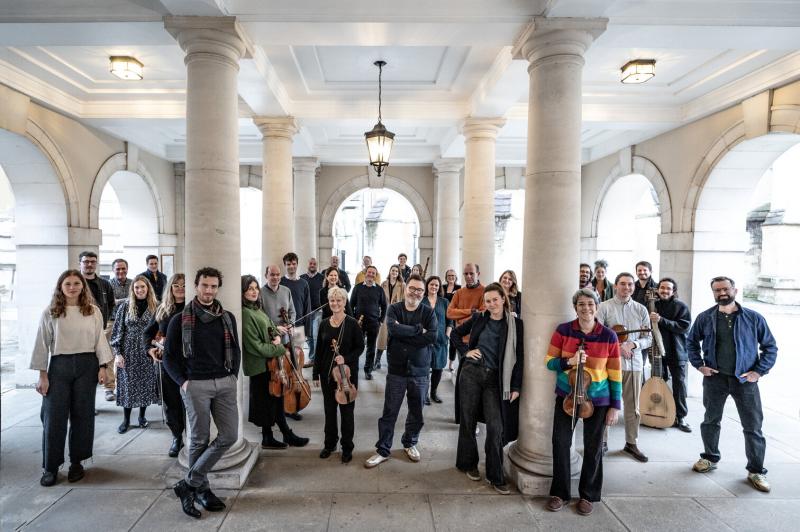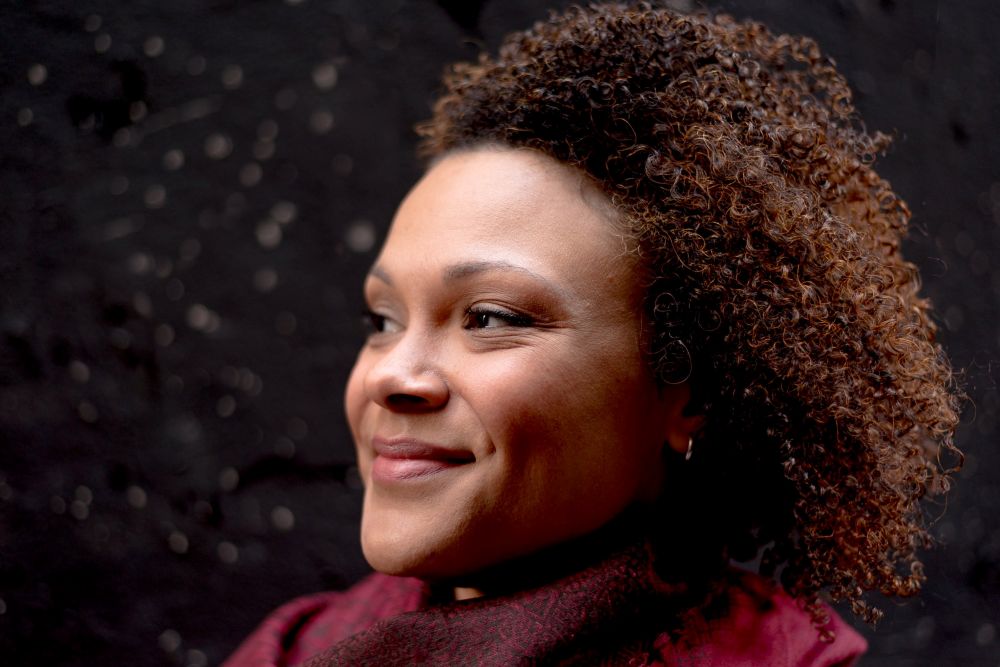Pygmalion, Early Opera Company, Curnyn, Middle Temple Hall review - Rameau magic outside the opera house | reviews, news & interviews
Pygmalion, Early Opera Company, Curnyn, Middle Temple Hall review - Rameau magic outside the opera house
Pygmalion, Early Opera Company, Curnyn, Middle Temple Hall review - Rameau magic outside the opera house
Welcome opportunity to catch opera-ballet, though not everything is in perfect focus

With French baroque opera all but banished from the UK’s major opera companies, it’s left to concert halls and country houses to fill the void. There’s a full-length treat ahead this summer with Rameau’s opéra-ballet Les Indes Galantes at Hampshire’s Grange Festival, but first Temple Music served up an amuse-bouche from Christian Curnyn and his Early Opera Company.
Before there was George Bernard Shaw (or My Fair Lady, for that matter) there was Rameau’s take on the myth of Pygmalion – the artist so in love with his own creation that she comes to life. The composer’s one-act opera is the perfect mouthful of a genre English audiences still treat with suspicion: a drama-in-miniature framed in some of the composer’s loveliest dance-music.
For so compact a drama (just four characters, including the Statue) the emotional stakes are surprisingly high, largely owing to an extraordinarily virtuosic sequence of arias and ariosos for Pygmalion himself (a high-stakes, high-wire role for haute-contre) starting with “Fatal Amour!” and finishing with “Régne Amour”. Any performance stands or falls with Pygmalion, and here it wobbled a little.
British tenor Samuel Boden has a sweet, flexible instrument that floats easily above the stave, capable of wriggling dextrously through even the densest thicket of semiquavers. But this wasn’t the best night for singer, visibly and audibly tense. Balance in Middle Temple Hall is a tricky affair, but strings frequently overpowered Boden, happiest in the knotty emotion of the initial languishing than the later celebration of Love’s power. “Régne Amour” never quite found the brilliance or power this unapologetic display of vocal pyrotechnics demands.  Rising sopranos Jessica Cale and Lauren Lodge-Campbell did lively battle as love-rivals Céphise (Pygmalion’s neglected girlfriend) and the Statue – Cale’s warmer, fuller voice a foil to Lodge-Campbell’s silvery clarity. But Rachel Redmond’s charismatic Amour, fizzing with mischievous energy, took the laurels. “Jeux es Ris” sparkled and danced, eddying on the currents of strings and woodwind, at one with Curnyn’s ensemble (Redmond pictured above by Chris Wallace).
Rising sopranos Jessica Cale and Lauren Lodge-Campbell did lively battle as love-rivals Céphise (Pygmalion’s neglected girlfriend) and the Statue – Cale’s warmer, fuller voice a foil to Lodge-Campbell’s silvery clarity. But Rachel Redmond’s charismatic Amour, fizzing with mischievous energy, took the laurels. “Jeux es Ris” sparkled and danced, eddying on the currents of strings and woodwind, at one with Curnyn’s ensemble (Redmond pictured above by Chris Wallace).
At the centre of the opera is a sequence of dances. Amour summons the Graces, who instruct the Statue in movement, sliding gracefully from mood to mood. Both here and in the preceding transformation scene, with its ravishing musical metamorphosis, the orchestra is in the spotlight. Curnyn’s rhythms were all groove and snap, from pomp to languor and back in an instant, his band alert and responsive, iridescent with shifting colours. The opera’s closing pair of dances: the lovely “Air gracieux” and the rollicking “Contredanse” (gilded with tambourine) sent us out in style.
Things were less in focus in the orchestral suite from Les Boréades. The concert’s colourful opener took time to settle, feeling under-rehearsed. Balance and tuning weren’t helped by the space, knocked off kilter occasionally by the glorious rusticity of Ursula Paludan Monberg and Peter Moutoussis’s horns – full-throttle in Rameau’s filmic “Suite des vents”, aided and abetted by Scott Bywater’s percussion.
This is music with no need for staging: Rameau does it all in the score. The opera house’s loss is the concert hall’s gain, and with advocacy of Curnyn and the like hopefully we’ll get the chance to hear more of these glorious works.
rating
Explore topics
Share this article
The future of Arts Journalism
You can stop theartsdesk.com closing!
We urgently need financing to survive. Our fundraising drive has thus far raised £49,000 but we need to reach £100,000 or we will be forced to close. Please contribute here: https://gofund.me/c3f6033d
And if you can forward this information to anyone who might assist, we’d be grateful.

Subscribe to theartsdesk.com
Thank you for continuing to read our work on theartsdesk.com. For unlimited access to every article in its entirety, including our archive of more than 15,000 pieces, we're asking for £5 per month or £40 per year. We feel it's a very good deal, and hope you do too.
To take a subscription now simply click here.
And if you're looking for that extra gift for a friend or family member, why not treat them to a theartsdesk.com gift subscription?
more Opera
 The Railway Children, Glyndebourne review - right train, wrong station
Talent-loaded Mark-Anthony Turnage opera excursion heads down a mistaken track
The Railway Children, Glyndebourne review - right train, wrong station
Talent-loaded Mark-Anthony Turnage opera excursion heads down a mistaken track
 La bohème, Opera North review - still young at 32
Love and separation, ecstasy and heartbreak, in masterfully updated Puccini
La bohème, Opera North review - still young at 32
Love and separation, ecstasy and heartbreak, in masterfully updated Puccini
 Albert Herring, English National Opera review - a great comedy with depths fully realised
Britten’s delight was never made for the Coliseum, but it works on its first outing there
Albert Herring, English National Opera review - a great comedy with depths fully realised
Britten’s delight was never made for the Coliseum, but it works on its first outing there
 Carmen, English National Opera review - not quite dangerous
Hopes for Niamh O’Sullivan only partly fulfilled, though much good singing throughout
Carmen, English National Opera review - not quite dangerous
Hopes for Niamh O’Sullivan only partly fulfilled, though much good singing throughout
 Giustino, Linbury Theatre review - a stylish account of a slight opera
Gods, mortals and monsters do battle in Handel's charming drama
Giustino, Linbury Theatre review - a stylish account of a slight opera
Gods, mortals and monsters do battle in Handel's charming drama
 Susanna, Opera North review - hybrid staging of a Handel oratorio
Dance and signing complement outstanding singing in a story of virtue rewarded
Susanna, Opera North review - hybrid staging of a Handel oratorio
Dance and signing complement outstanding singing in a story of virtue rewarded
 Ariodante, Opéra Garnier, Paris review - a blast of Baroque beauty
A near-perfect night at the opera
Ariodante, Opéra Garnier, Paris review - a blast of Baroque beauty
A near-perfect night at the opera
 Cinderella/La Cenerentola, English National Opera review - the truth behind the tinsel
Appealing performances cut through hyperactive stagecraft
Cinderella/La Cenerentola, English National Opera review - the truth behind the tinsel
Appealing performances cut through hyperactive stagecraft
 Tosca, Royal Opera review - Ailyn Pérez steps in as the most vivid of divas
Jakub Hrůša’s multicoloured Puccini last night found a soprano to match
Tosca, Royal Opera review - Ailyn Pérez steps in as the most vivid of divas
Jakub Hrůša’s multicoloured Puccini last night found a soprano to match
 Tosca, Welsh National Opera review - a great company reduced to brilliance
The old warhorse made special by the basics
Tosca, Welsh National Opera review - a great company reduced to brilliance
The old warhorse made special by the basics
 BBC Proms: The Marriage of Figaro, Glyndebourne Festival review - merriment and menace
Strong Proms transfer for a robust and affecting show
BBC Proms: The Marriage of Figaro, Glyndebourne Festival review - merriment and menace
Strong Proms transfer for a robust and affecting show
 BBC Proms: Suor Angelica, LSO, Pappano review - earthly passion, heavenly grief
A Sister to remember blesses Puccini's convent tragedy
BBC Proms: Suor Angelica, LSO, Pappano review - earthly passion, heavenly grief
A Sister to remember blesses Puccini's convent tragedy

Add comment